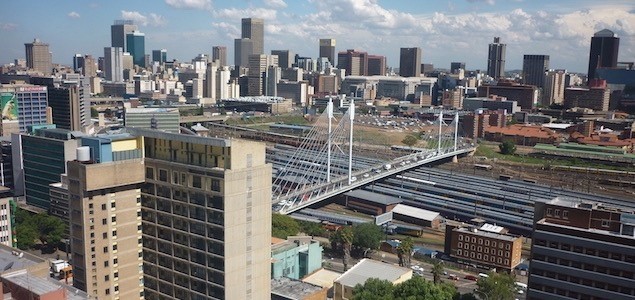IBM plans to use IoT to control air pollution in Johannesburg

IBM, together with the Johannesburg authorities and the Council for Scientific and Industrial Research, plans to use modern technology to combat air pollution in this city. Johannesburg itself is the economic center of South Africa, generating up to 17% of the country's GDP. Initially, the city was founded as a settlement for industrial workers - mainly miners.
Over time, the situation has changed, the city began to grow. Now the population of Johannesburg has increased to 4.5 million people. Environmental pollution control is ongoing here, but the monitoring systems currently in use cannot be called effective, therefore the state of the environment is far from ideal. Moreover, the air in the capital has a rather high content of very small particles, which are extremely dangerous for human health. Therefore, IBM plans to help the city solve this problem.
As part of the Green Horizons initiative, a partnership agreement was signed between IBM and Johannesburg. Under the contract, the company plans to use the Internet of Things (IoT) and the analytical capabilities of the IBM cognitive system. This will reveal the weak points of the city’s atmosphere monitoring infrastructure. Using such a system, specialists will be able to develop recommendations for reducing atmospheric pollution.
The research division of the corporation in South Africa is currently working closely with experts from the government and research organizations in the region. The purpose of cooperation is the analysis of atmospheric air observation data from archives, as well as real-time monitoring. So far, this is only about Johannesburg, but in the future the project will expand to the city of Tswana, as well as to the “industrial triangle” of Baal . The authors of the project hope to understand the causes and sources of air pollution, as well as the effectiveness of pollution control methods. It is planned to create computer models of pollution, on which various methods of pollution control will be developed.
In the second phase of the project, the developers intend to create a high-precision forecast for pollution, which will help to take measures in time to help reduce the level of pollutants in the atmosphere of the city.
The IBM Green Horizons initiative is to develop innovative solutions for the research laboratories of companies around the world. Leading experts in the field of environmental protection also take part in this project. The center of the initiative to create air quality monitoring systems is a cognitive system that processes huge amounts of data. This data is observations over a long period of time, information from thousands of sensors around the world, meteorological satellites and traffic monitoring systems.
Cognitive technologies make it possible to bring all this information into a form convenient for perception, as well as to develop a predictive model that shows the main sources of pollution, and also indicates the directions of distribution of the polluted layers of the atmosphere of different regions. The system also calculates the potential effect of pollution, which allows us to understand exactly how best to deal with this phenomenon.
Predictive models are used in the paper, including traffic, weather, air pollution, and economic data. On the basis of all this, scenarios such as “what if” and methods for dealing with negative phenomena in such scenarios are being worked out. For example, this may be optimization of traffic, the movement of industrial facilities, the use of alternative energy sources.
